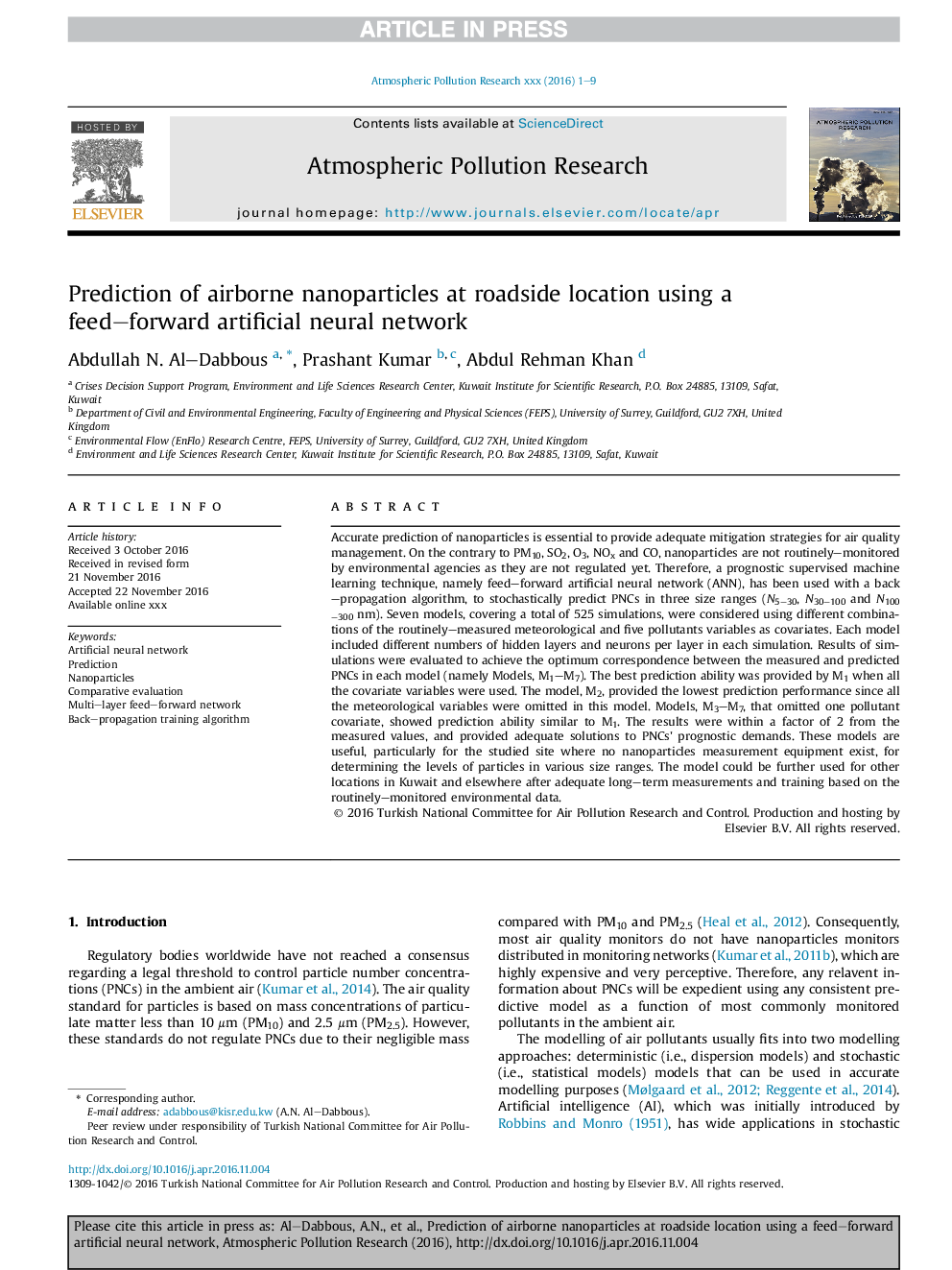| Article ID | Journal | Published Year | Pages | File Type |
|---|---|---|---|---|
| 8862751 | Atmospheric Pollution Research | 2017 | 9 Pages |
Abstract
Accurate prediction of nanoparticles is essential to provide adequate mitigation strategies for air quality management. On the contrary to PM10, SO2, O3, NOx and CO, nanoparticles are not routinely-monitored by environmental agencies as they are not regulated yet. Therefore, a prognostic supervised machine learning technique, namely feed-forward artificial neural network (ANN), has been used with a back-propagation algorithm, to stochastically predict PNCs in three size ranges (N5-30, N30-100 and N100-300Â nm). Seven models, covering a total of 525 simulations, were considered using different combinations of the routinely-measured meteorological and five pollutants variables as covariates. Each model included different numbers of hidden layers and neurons per layer in each simulation. Results of simulations were evaluated to achieve the optimum correspondence between the measured and predicted PNCs in each model (namely Models, M1-M7). The best prediction ability was provided by M1 when all the covariate variables were used. The model, M2, provided the lowest prediction performance since all the meteorological variables were omitted in this model. Models, M3-M7, that omitted one pollutant covariate, showed prediction ability similar to M1. The results were within a factor of 2 from the measured values, and provided adequate solutions to PNCs' prognostic demands. These models are useful, particularly for the studied site where no nanoparticles measurement equipment exist, for determining the levels of particles in various size ranges. The model could be further used for other locations in Kuwait and elsewhere after adequate long-term measurements and training based on the routinely-monitored environmental data.
Related Topics
Physical Sciences and Engineering
Earth and Planetary Sciences
Atmospheric Science
Authors
Abdullah N. Al-Dabbous, Prashant Kumar, Abdul Rehman Khan,
